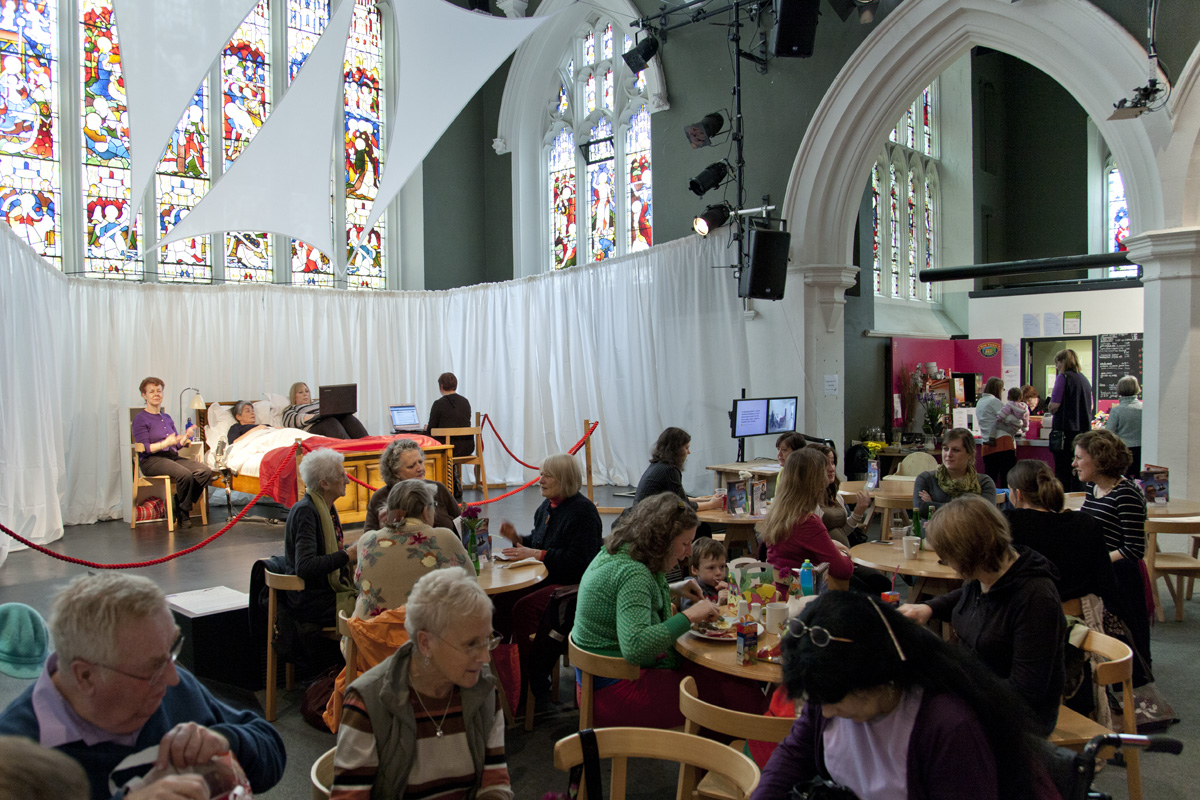Often, we imagine activism as marches and sit-ins, activities that involve physical robustness. Yet Liz Crow challenged my traditional conception of activism through her work, “Bedding Out.” In the piece, Crow, who prefers not to specify her specific disability lies in a bed in the public space of the Salisbury Arts Center. There, she has “bedside conversations” with visitors. A live broadcast of 48 hours brings the piece to a wider audience. Crow is part of a disability rights movement in the UK in response to recent cuts to benefits. Through the visibility of her performance, she hopes to combat the relative invisibility of those with disabilities in the UK. When other forms of activism with an emphasis on mobility might exclude some people with disabilities (although there is a rich history of folks with disabilities taking part in marches, sit-ins, etc. and putting their bodies on the line), Crow’s “Bedding Out” is entirely stationary. How might her work prompt us to think about the accessibility of more orthodox forms of activism?

a wiki of socially engaged art
